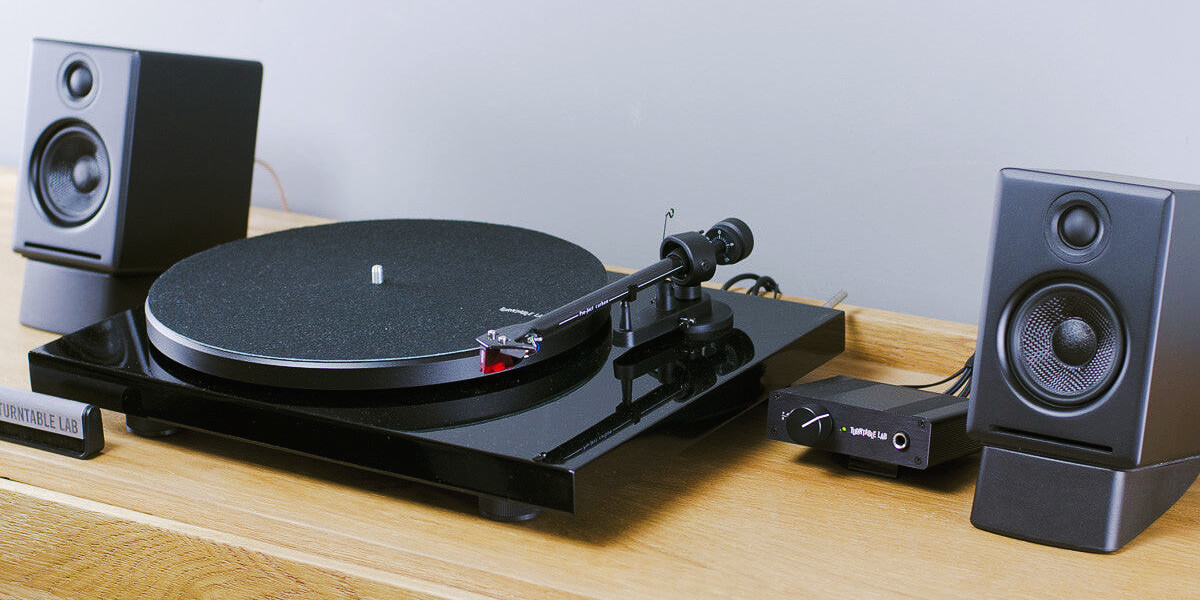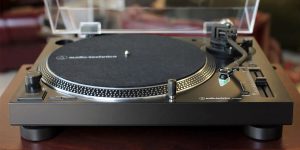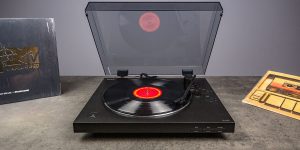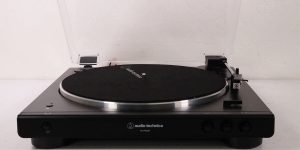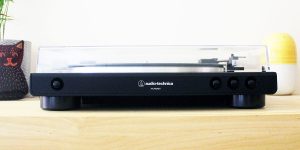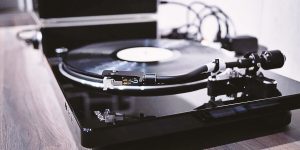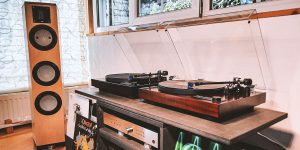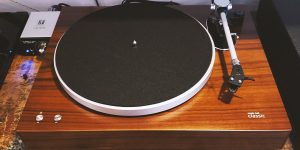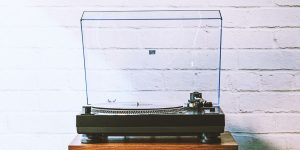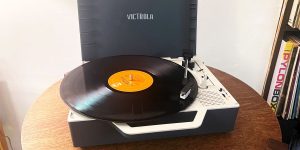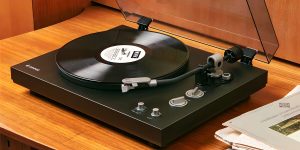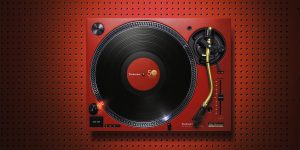You’ve finally acquired that rare, sought-after album you’ve been hunting for years. And you can’t wait to give it a spin on your turntable. So, you carefully place the record on the platter, gently lower the tonearm, and… the sound is barely audible or disappointingly lackluster. This is where a turntable preamp comes into play. It ensures that the delicate signal from your turntable’s cartridge is amplified and equalized, breathing life into your favorite tunes and delivering the immersive listening experience you crave.
In this article, I will help you understand the purpose of turntable preamps and give practical tips on choosing the perfect match for your setup.
Understanding the function of a turntable preamp
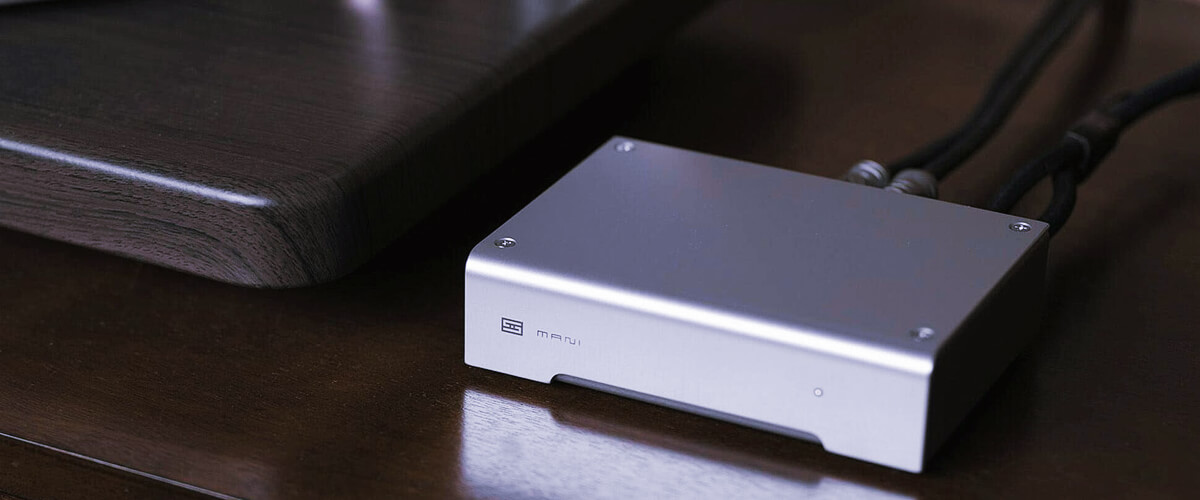
What is a turntable preamp?
A turntable preamp, also known as a phono preamplifier or simply phono preamp, is an essential component in any vinyl playback system. Its primary purpose is to amplify and equalize the low-level signal generated by the turntable’s cartridge when interacting with the record grooves.
What’s the purpose of a preamp?
Amplifying the signal
As you may know, the signal from a turntable is weak compared to other audio devices. So, a preamp makes it louder and more suitable for your amplifier or receiver.
Equalizing the sound
When vinyl records are made, the bass is reduced, and the treble is increased to fit everything on the record. A preamp restores the original sound balance by using something called the RIAA equalization curve. This ensures you hear the music as the artist intended.
Connecting to your audio system
Preamps help connect your turntable to your audio system. If your amplifier or receiver doesn’t have a phono input, you need a separate preamp to make your turntable work with the rest of your equipment.
Types of turntable preamps
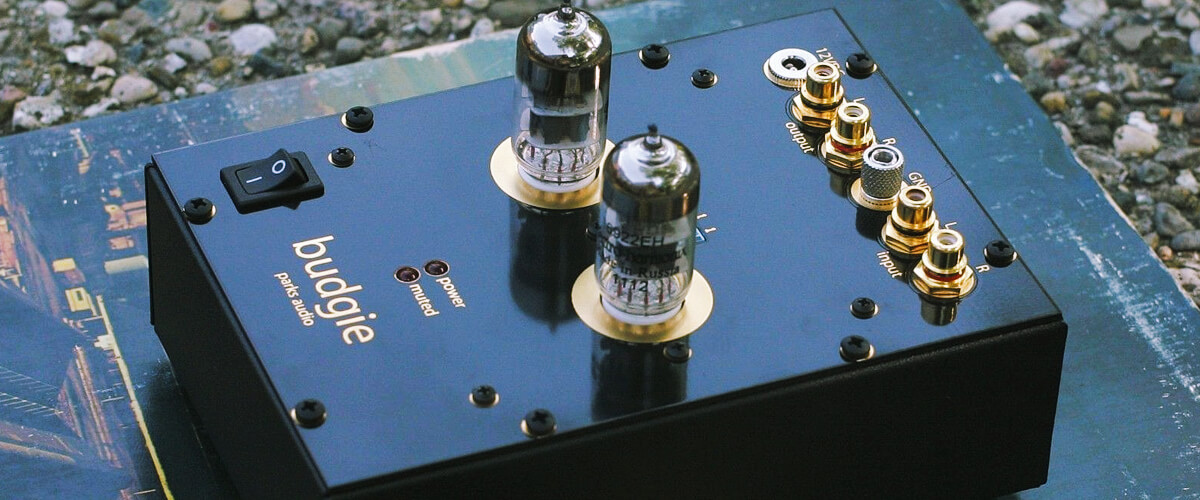
There are two main types of turntable preamps: built-in and external.
Built-in preamps in turntables
Some turntables come with a built-in preamp, which means you don’t need to purchase a separate preamp. These turntables often have a switch on the back that allows you to select between phono and line output. If you plan to use your turntable with an amplifier or receiver that doesn’t have a phono input, a built-in preamp may be the way to go.
External preamps
External preamps are separate units that you need to buy and connect to your turntable. They offer more flexibility and higher-quality sound than built-in preamps. External preamps can be solid-state or tube-based, with the latter often preferred by audiophiles for their warm and natural sound.
Some external preamps come with additional features like adjustable gain, impedance settings, and subsonic filters, allowing you to fine-tune your setup to your liking. However, they require extra space and cabling, and you need to ensure that the preamp you choose matches the specifications of your turntable and cartridge.
Comparing built-in and external preamps
Check out the chart I have created to help you compare built-in and external preamps side-by-side.
| Feature | Built-in Preamp | Standalone Preamp |
|---|---|---|
| Integration | Comes integrated with the turntable | Separate unit from the turntable |
| Ease of Setup | Simple, plug-and-play | Requires additional connections |
| Cost | Usually more cost-effective | Generally more expensive |
| Sound Quality | Good, suitable for casual listeners | Often better, preferred by audiophiles |
| Upgradability | Limited, as it’s built into the turntable | Easier to upgrade or replace |
| Space requirements | No additional space needed | Requires dedicated space for the unit |
| Customization | Limited options | More options for fine-tuning |
| Compatibility | Specific to the turntable | Compatible with various turntables |
| Interference | Potential for interference from turntable components | Reduced interference as it’s separate from the turntable |
| Maintenance and troubleshooting | May require turntable disassembly | Easier to maintain and troubleshoot |
Note that I provided a general comparison between built-in and standalone preamps in this chart. Individual models and brands may have specific features and capabilities that differ from those listed above.
Key features to consider in a turntable preamp
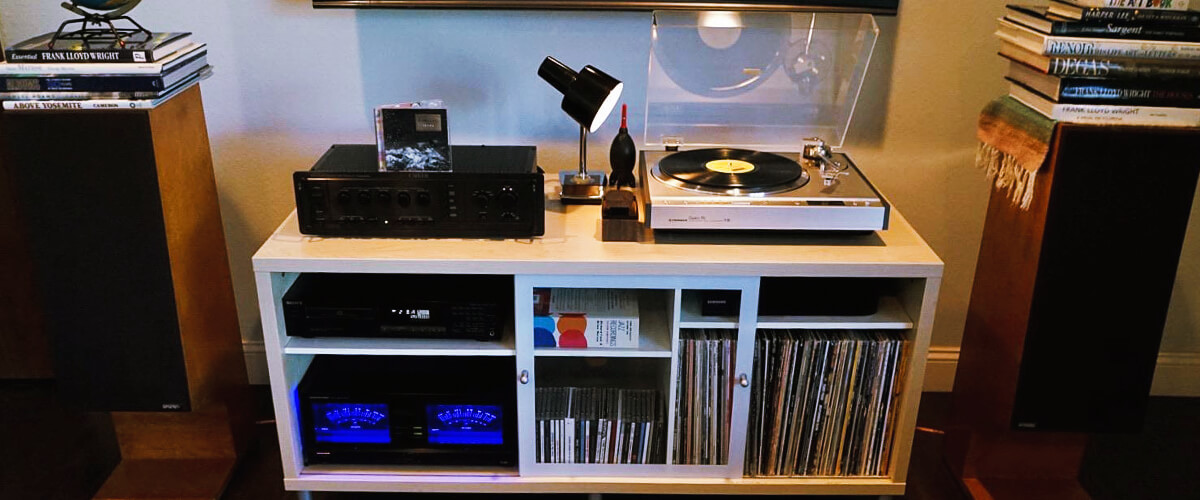
Gain and output level controls
As you are on the hunt for a suitable turntable preamp, I recommend checking whether gain or output level controls are adjustable. These controls allow you to fine-tune the output of the preamp to match the input sensitivity of your amplifier or speakers. This feature will help optimize the sound quality and volume control of the overall system, ensuring you get the optimal listening experience.
Input impedance and capacitance
Also, I am all for selecting a preamp with suitable input impedance and capacitance for the specific type of cartridge used in your device (Moving Magnet or Moving Coil). Just be aware that different cartridges have different electrical requirements. So, using a preamp that is not compatible can result in poor sound quality and even damage to the cartridge.
Signal-to-noise ratio (SNR) and total harmonic distortion (THD)
The sound quality of a preamp is also affected by its Signal-to-Noise Ratio (SNR) and Total Harmonic Distortion (THD) specifications. A higher SNR indicates less background noise, while a lower THD means less distortion. Find a balance between these specifications and other factors, such as budget and overall system compatibility. Choose a preamp that offers good SNR and THD specifications while still fitting your budget and meeting your other requirements.
Connections and compatibility
Also, verify that the preamp has the appropriate input and output connections for the turntable, amplifier, or speakers you use. Additionally, some preamps may have additional features like a ground terminal or a built-in headphone amplifier. Checking for compatibility and additional features will help you ensure seamless integration of the vinyl preamp into your vinyl playback system.
Selecting the right turntable preamp for your needs
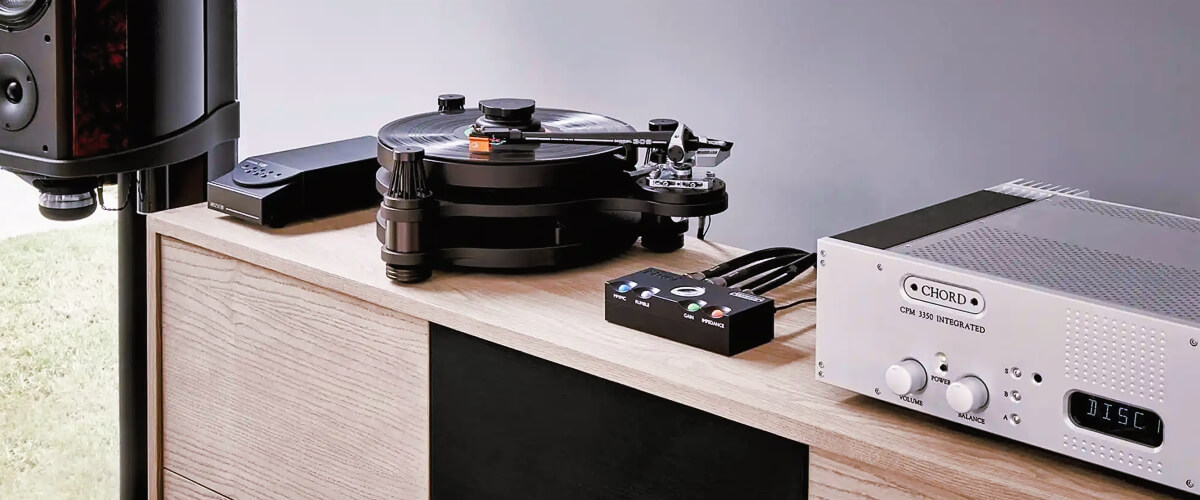
Determine your equipment compatibility
Nothing is worse than investing in a preamp only to realize it’s not compatible with your equipment. So, ensure that the preamp you select has the right connections and electrical requirements for your setup. Namely, check for compatibility with your turntable, amplifier, and speakers. This will guarantee optimal sound quality and prevent damage to your equipment.
Consider your budget
You don’t want to break the bank on a preamp, do you? But at the same time, you don’t want to compromise on sound quality, right? So, determine your budget and stick to it. Remember, high-end preamps may offer better sound quality, but they may not be necessary for everyone’s needs.
Research and compare preamps
It’s as simple as that — researching and comparing different preamps is a step you should not avoid. I rely on reviews and recommendations from trusted sources. You can do this too. So, look for reviews and recommendations from reputable sources, and compare the features and specifications of different preamps to determine the right fit. Make a list of the preamps that meet your requirements and compare their pros and cons to make an informed decision.
Test and evaluate preamps
If possible, test and evaluate preamps before making a final decision. This is one of my favorite steps because I get to try out different preamps and determine which one is the right fit for me. Some audio equipment stores may have preamps available for testing. Or you may be able to borrow one from a friend or family member to try before you buy.

